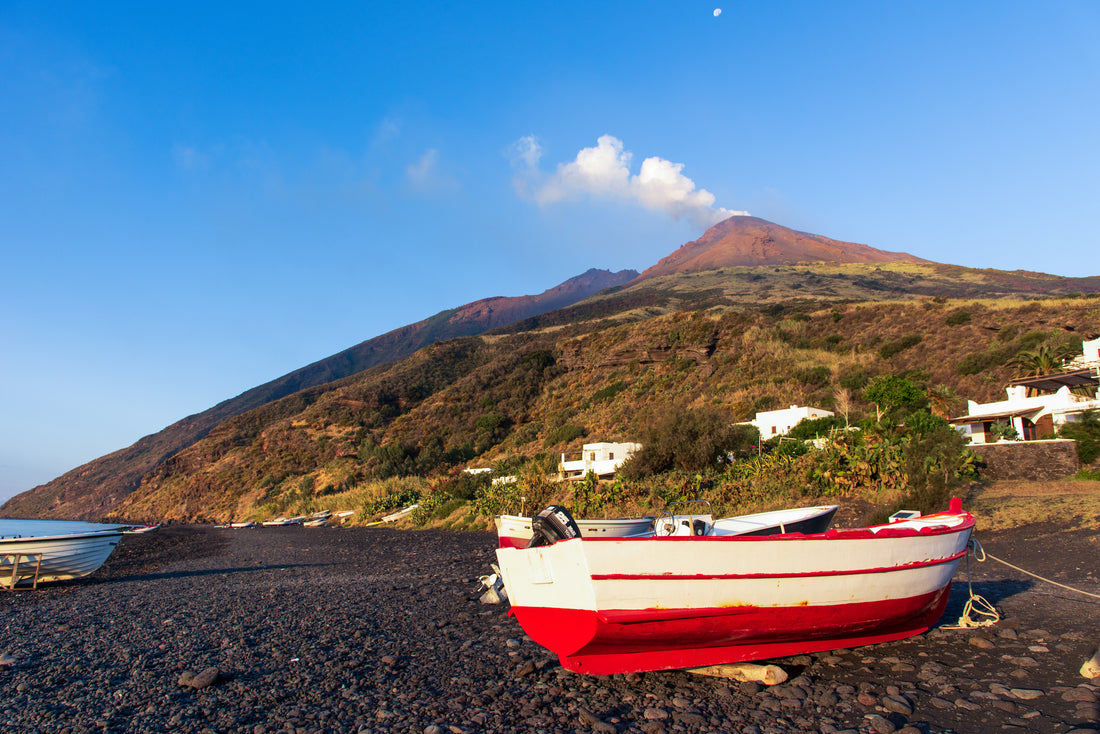
The Island of Stromboli Volcanic Eruptions
The small island of Stromboli in the Mediterranean Sea is best known for its active volcano, which has been erupting almost constantly since the 1930s. Its first recorded eruption dates back to as early as 1095, and it has been erupting almost constantly from one side or another ever since. This past weekend, the world took notice of this tiny island as the volcano erupted once again.
History of Stromboli Island
Stromboli Island is part of the volcanic archipelago known as the “Etna Islands” in Italy. The “Etna Islands” group, also includes the islands of Vulcano and the islets of Formiche di Stromboli, and Licosa. The island is about a mile long and is surrounded by a rugged coastline that features sheer cliffs and warm, clear waters. Stromboli Island is located about 20 miles off the coast of Sicily, Italy. Stromboli was formed about 500,000 years ago via a process known as “Erosion of the Seamount,” which is where a submarine volcano erupts to the surface. Stromboli was once a much larger volcano, but as it erupted, the island slowly eroded away. The island is a popular tourist destination that is visited by thousands every year.
Saponificio Varesino Volcanic Product
The sand used in Saponificio Varesino’s volcanic shower scrub product comes from this very volcano. This product is the Volcanic Sand Shower Gel Scrub. This shower gel scrub has the jet black sands from the Island of Stromboli within the gel to make a perfect shower gel scrub that gently exfoliates the skin.
A Brief History of Stromboli Volcano
Stromboli Volcano is a very active volcano. The last time it was completely inactive was in 1902. Since then, there have been over 40 eruptions, including a massive eruption in April of 2018. Stromboli is a very unique volcano in that it has a very small crater, and it is made up of two very distinct types of lava. The first type of lava is a black porous lava that is extremely viscous, while the other is a lava that is so fluid that it is as thin as water.
Why Does Stromboli Volcano Keep Erupting?
There are a few different theories as to why Stromboli Volcano keeps erupting. One of the most common beliefs is that the surrounding seawater contains an abundance of hydrogen sulfide gas, which is a gas that is known to produce sulfuric acid when it comes into contact with the rocks at the bottom of the sea. As the hydrogen sulfide gas is released into the water around the island, it forms a corrosive environment that breaks down the rocks on the sea floor where the volcano rests. This breakdown creates pockets in the rock that quickly fill with magma, causing the volcano to erupt. There is also a theory that water from the surrounding sea enters the volcano and triggers an eruption. This is due to the fact that Stromboli Volcano sits in an area where the sea level is slowly rising. As the water level increases, it fills in the gaps in the rocks that are between the sea floor and the volcano. This triggers pressure inside the volcano, which causes an eruption.
The Future of Stromboli Volcano
As Stromboli Volcano continues to erupt, it is very likely that it will continue to erode away until only the two types of lava that flow out of the volcano remain. This is because the black, porous lava that erupts out of the volcano is very corrosive, while the thin, fluid lava that pours out of the volcano is extremely fluid. This is actually the fate that the majority of volcanoes meet. The erosion caused by the constant flow of lava from the volcano slowly wears away at any rocks that are present, and they are turned into clay. This clay slowly sinks to the bottom of the ocean, where it is compacted and turns into what is known as “black clay.”
